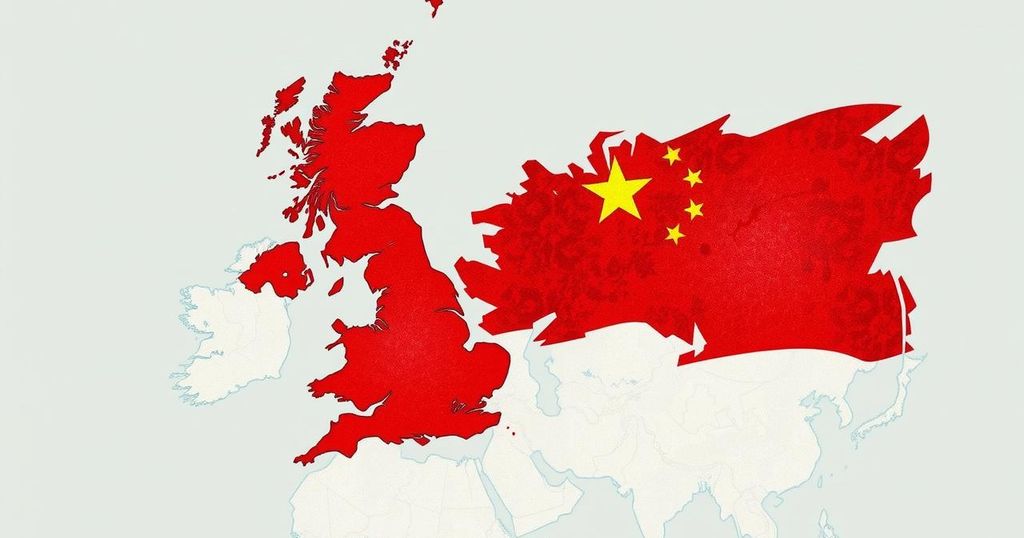India’s Trade Deficit Reaches Record High of $37.84 Billion in November 2024
India’s trade deficit soared to a record $37.84 billion in November 2024, mainly due to a significant increase in gold imports and a decrease in exports. This substantial deficit is anticipated to put further pressure on the rupee, which has already been declining. While overall export strategies are being developed to mitigate these issues, concerns remain about sustained high levels of gold imports and their impact on the economy.
India’s trade deficit reached a staggering $37.84 billion in November 2024, marking a sharp increase attributed largely to soaring gold imports coupled with declining exports. This unprecedented deficit is expected to exert additional pressure on the Indian rupee, which has already experienced consistent downward movement amidst significant portfolio outflows over the preceding three months.
In October 2024, the trade deficit was reported at $27.1 billion, with analysts previously projecting November’s figure to be around $23 billion. As a result of these developments, the rupee hit a record low on Monday, depreciating 0.1% to 84.8712 against the US dollar.
The latest data reveals that November goods exports declined by 4.85% to $32.11 billion compared to $33.75 billion during the same month last year. In stark contrast, imports surged by 27% to $69.95 billion from $55.06 billion in November 2023, primarily propelled by record-setting gold imports.
Gold imports surged by an astonishing 332%, rising to $14.86 billion in November 2024 from $3.44 billion in the same month of the previous year. This sharp increase indicates that the gold is largely being imported for domestic consumption rather than for export value addition, according to an expert who wished to remain anonymous.
Additionally, there was a notable contraction in petroleum product exports, which fell by 49.7% to $3.72 billion due to decreasing international oil prices, although the volume of petroleum exports did increase. Exports to significant trading partners showed similar trends; exports to China decreased by 15.47% to $1.17 billion, while Chinese imports surged by 9.89% to $8.79 billion. Shipments to the United States declined by 2.58% to $5.7 billion, and exports to Bangladesh fell by 10.3% to $872 million, potentially linked to the shifting political climate in that region.
Commerce Secretary Sunil Barthwal sought to alleviate concerns over the trade deficit, emphasizing that non-petroleum exports grew by 7.8% to $28.4 billion despite global challenges. He noted, “Merchandise exports have taken a hit mainly due to a fall in global crude prices,” while also highlighting that many imports support domestic value addition for exports.
Ranen Banerjee, Partner and Leader of Economic Advisory at PwC India, remarked on the slow growth of exports compared to the rapid increase in imports, which has exacerbated pressure on the rupee amid ongoing portfolio outflows. He also suggested that declines in commodity prices might offer some respite, potentially alleviating the current account deficit to a degree.
Adding to this perspective, Aditi Nayar, Chief Economist and Head of Research Outreach at ICRA Ltd, linked high gold imports to seasonal demand, suggesting this peak is unlikely to persist, thereby helping to lower the future trade deficit.
Looking ahead, Barthwal expressed optimism regarding the end of the fiscal year, projecting overall exports (including both merchandise and services) could exceed $800 billion. The commerce ministry has devised a robust strategy focusing on 20 countries with high export potential, planning to engage heads of Indian commercial missions to devise an actionable export strategy.
Moreover, the government has identified six goods sectors and six service sectors deemed to hold higher export potential. This targeted effort follows India’s achievement of record exports totaling $776.68 billion in FY24, despite facing global market headwinds. The cumulative performance within the current financial year also indicates positive trends, with merchandise exports between April and November 2024 reaching $284.31 billion, up 2.17% from $278.26 billion recorded during the same timeframe in the previous year.
The article delves into India’s escalating trade deficit, which reached a record high in November 2024, underscoring the economic implications of increased gold imports and decreased exports. It highlights the intricate relationship between trade deficits and currency values, particularly how these shifts pressure the Indian rupee. Additionally, the article discusses various sectoral performances, the government’s strategic response to increasing export potential, and the overall economic outlook amidst global challenges.
In summary, India’s trade deficit reached an all-time high of $37.84 billion in November 2024, primarily driven by surging gold imports and declining exports. This trend is exerting significant pressure on the Indian rupee, already impacted by previous portfolio outflows. Despite these challenges, government officials remain optimistic about achieving record export levels by the end of the fiscal year, targeting key sectors and markets to bolster trade performance.
Original Source: www.hindustantimes.com








Post Comment